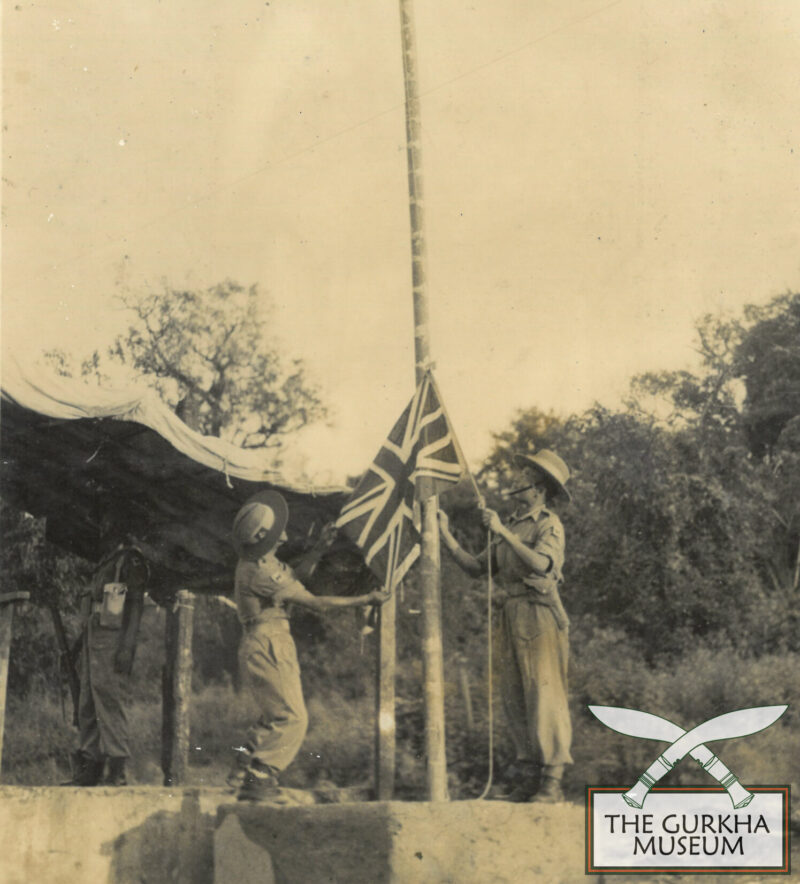Europe: Final Offensive
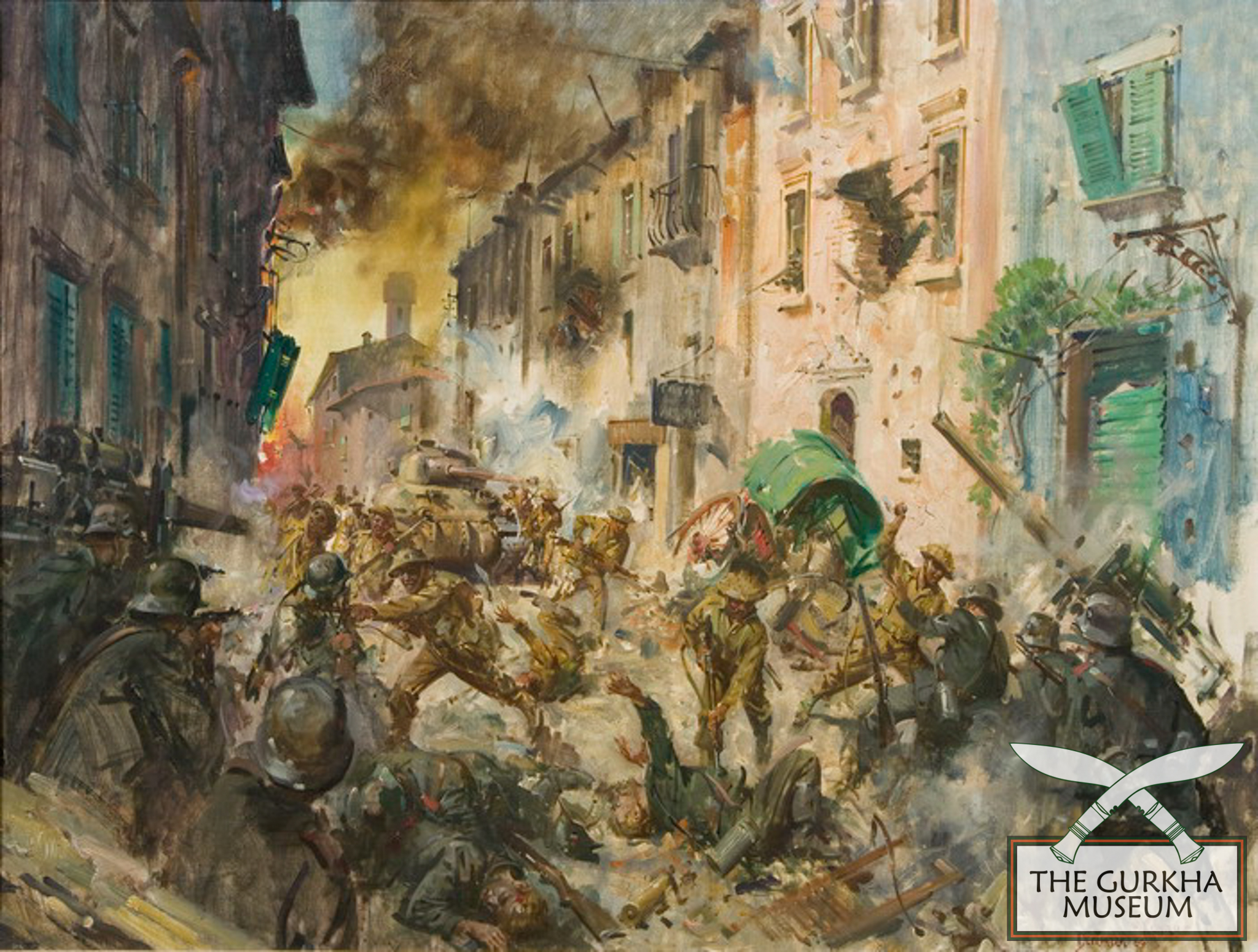
The combined force of 2/6GR and the 14/20th Hussars charge into Medicina, as depicted by Terrence Cuneo
In early 1945, Gurkha battalions in Italy prepared for the Allies’ last push against entrenched German forces. Serving within the Eighth Army, the Gurkhas played a decisive role in breaching successive river defences along the Senio, Santerno, and Gaiana. These operations demanded both tactical ingenuity and physical endurance, as assaults were launched under intense artillery and small-arms fire.
At Medicina, the 2nd Battalion, 6th Gurkha Rifles, in close coordination with armoured units, fought through fortified positions in fierce street combat, breaking the enemy’s hold. The Gurkhas’ relentless advances fractured German cohesion, enabling the rapid crossing of the Po River and the liberation of northern Italy. Germany’s surrender in May brought their European campaign to a close, though Gurkha units remained on occupation duties in the immediate post-war period.
Far East: The Burma Campaign’s climactic battles
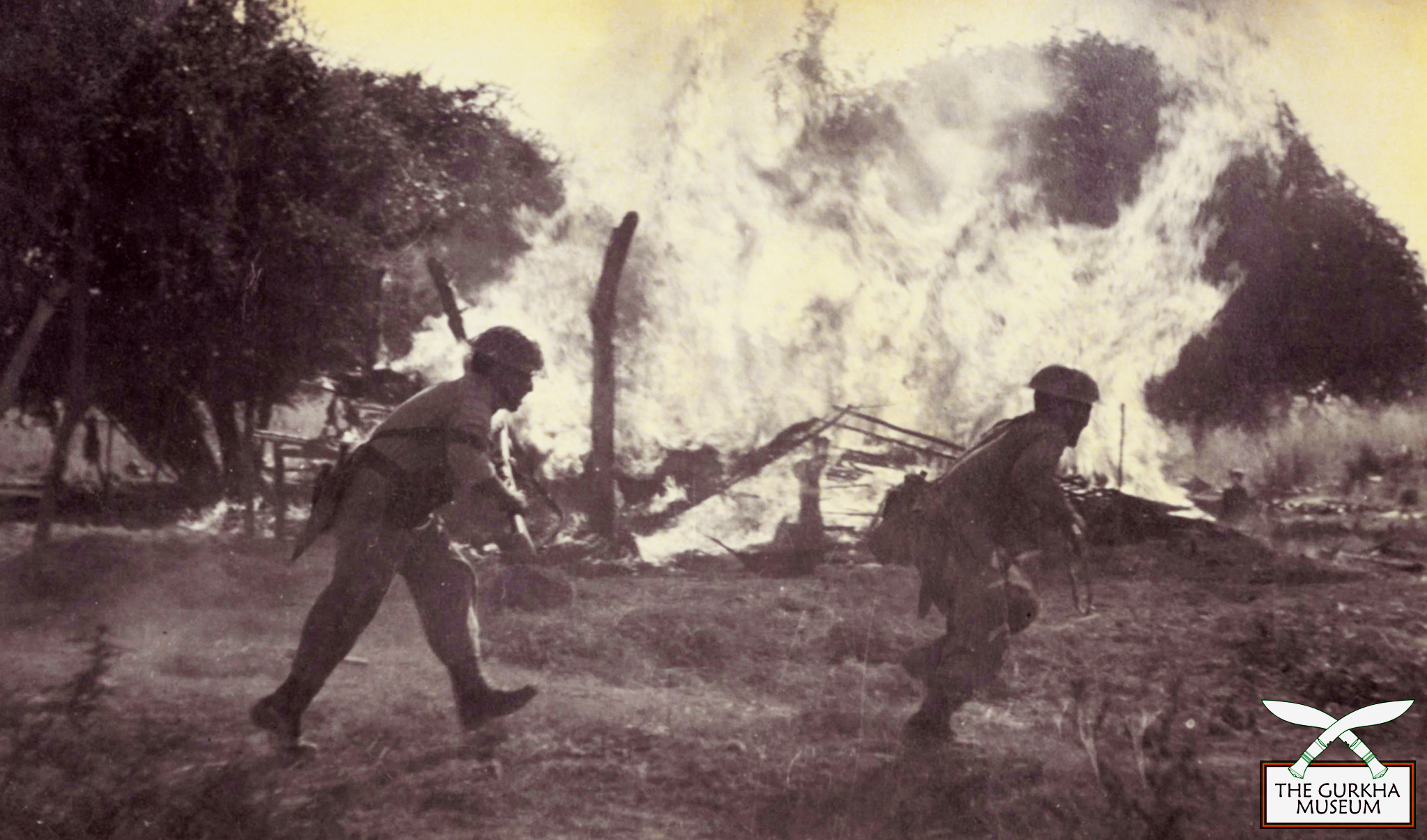
Gurkhas of 4/10GR moving past a burning village during the Irrawaddy operations, February 1945.
Meanwhile, in Southeast Asia, 23 Gurkha battalions were integral to General William Slim’s Fourteenth Army during the advance into Japanese-held Burma. The crossing of the Irrawaddy River in early 1945 marked a turning point, as Gurkhas fought tenaciously to hold bridgeheads in the face of determined counterattacks.
From there, the Gurkhas advanced on Meiktila, engaging in some of the fiercest urban fighting of the Burma campaign – clearing enemy bunkers, resisting encirclement, and securing the city as a strategic pivot. Simultaneously, at Mandalay Hill, the 4th Battalion, 4th Gurkha Rifles mounted a daring night assault, overcoming steep, fortified terrain and expelling Japanese defenders in close-quarters combat. These victories dismantled Japanese resistance in central Burma, opening the way to Rangoon and hastening the collapse of enemy control before Japan’s surrender in August 1945.
The Gurkhas’ service and sacrifice
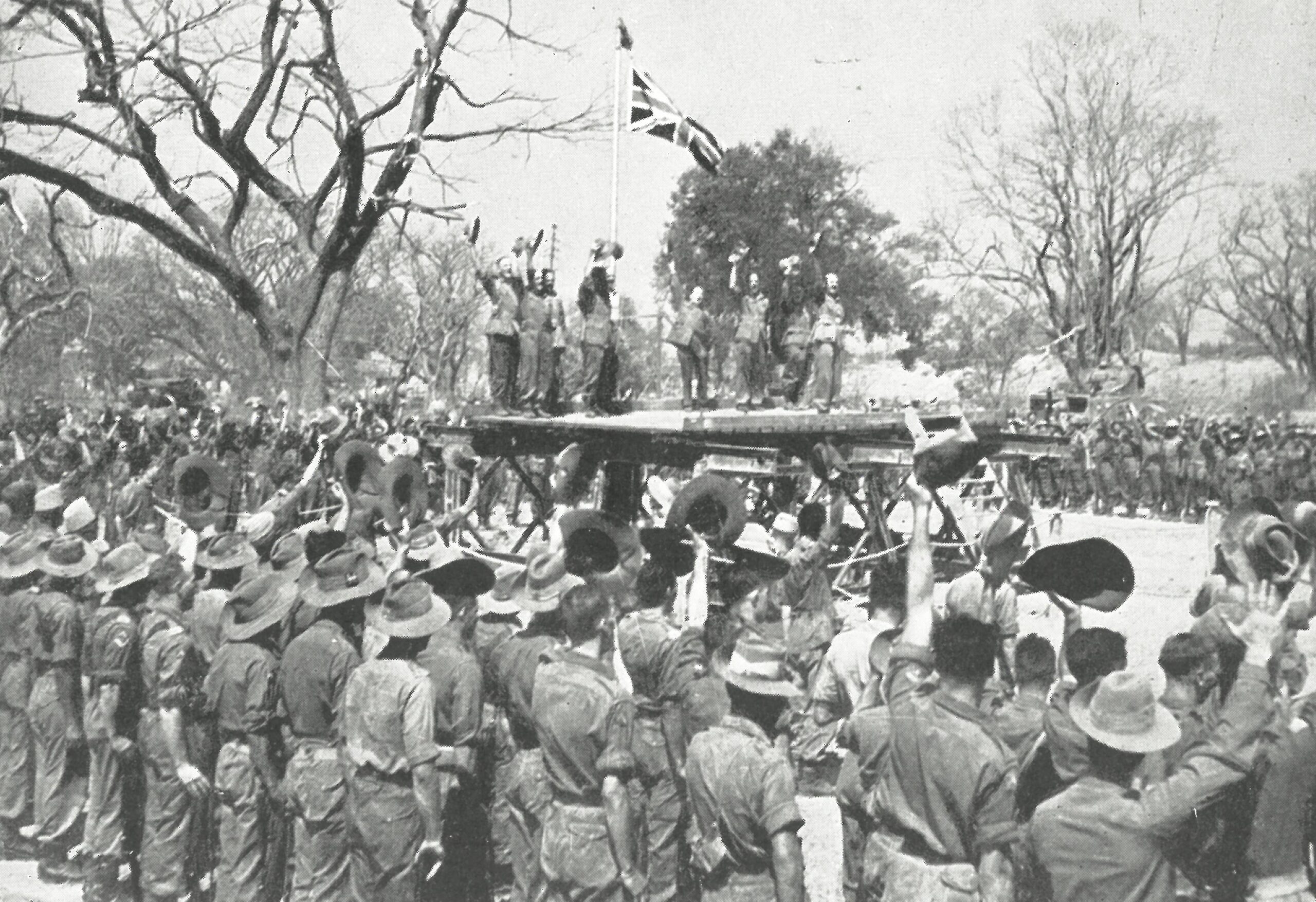
General Bill Slim leading a flag raising ceremony at Fort Dufferin (Mandalay Palace) after the capture of the city, March 1945. Image from the 6th Gurkha Rifles Regimental History.
As the nation pauses to remember the 80th anniversary of Victory over Japan (VJ80), it is worth remembering the approximately 140,000 Gurkhas and their families that served during the Second World War. The Gurkhas’ tremendous contribution to the ultimate victory over Axis forces came at a deadly cost. The Gurkhas suffered approximately 20,000 casualties during the Second World War, including over 9,000 dead.
It was the Far East theatre that saw the greatest number of Gurkha casualties. To take one battalion as an example, 1st Battalion, 10th Gurkha Rifles recorded 158 Gurkhas killed in action between 1942 and 1945, with a further 75 dying from wounds and disease. Gurkhas fighting in Europe fared no better, with the 2nd Battalion, 6th Gurkha Rifles having suffered 560 casualties during its campaign in Italy.
Regardless of casualties, the Gurkha fighting spirit remained high right until the end of the war. In fact, among the men of the 3rd Battalion, 6th Gurkha Rifles there was some disappointment that the war had ended, as they were hoping to carry onto Malaya and give the Japanese ‘a real thrashing’.
Major Patrick Davis, 4th Battalion, 8th Gurkha Rifles, when fighting ceased in August 1945 contemplated: “We had to adjust to a new time scale, one that looked at the future as months, years, not hours, days. Tomorrow could be 1946 as well as Friday”.
Grateful reflection
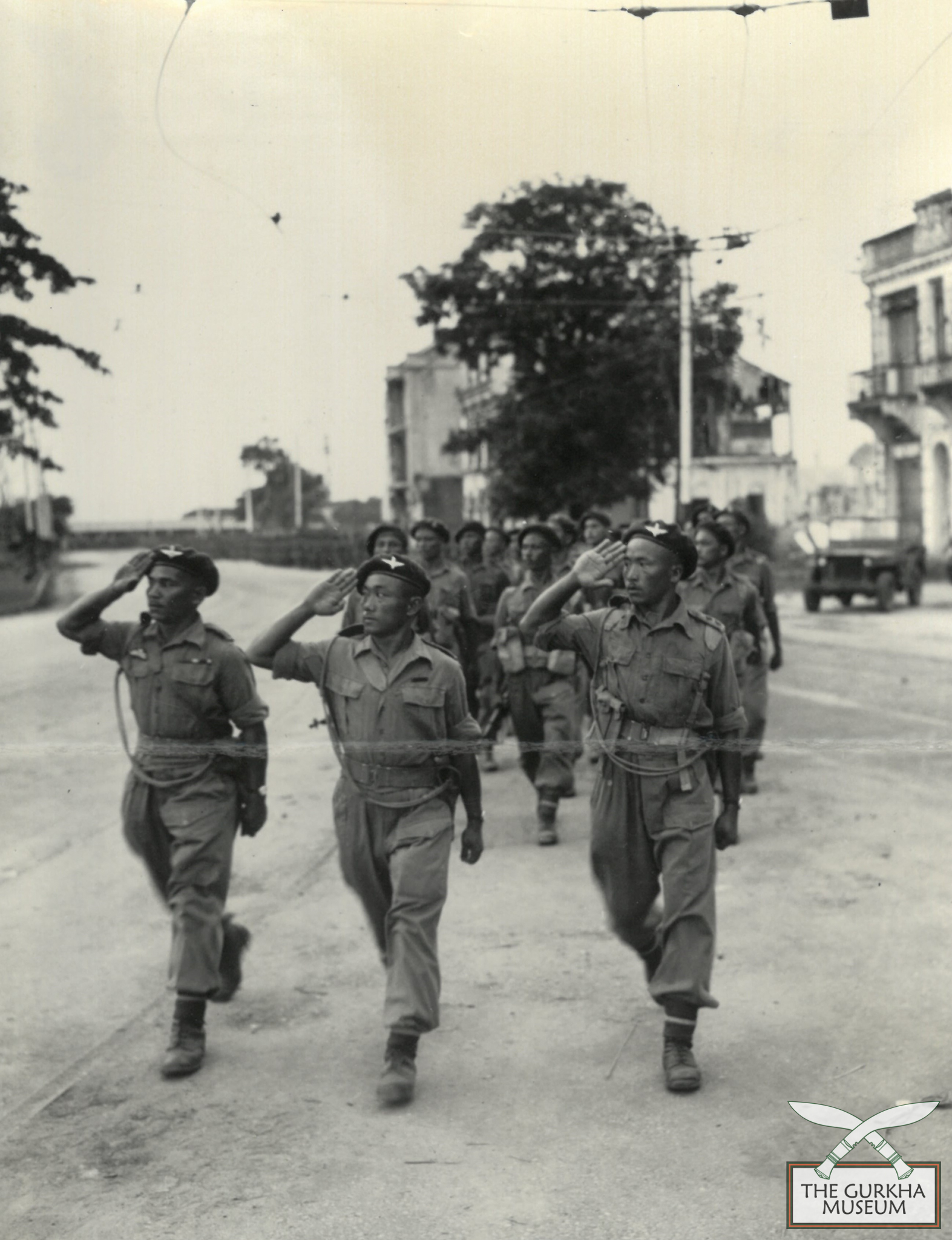
Gurkhas parading in Rangoon, May 45
In 1945, the Gurkhas demonstrated unmatched adaptability, excelling in both the alpine battlefields of Europe and the tropical battle zones of Burma. Whether storming river lines in Italy or seizing urban strongholds in Burma, the Gurkhas combined discipline, courage, and tactical precision – cementing their reputation as one of the most formidable infantry forces of the Second World War.
Jai the Gurkhas!
